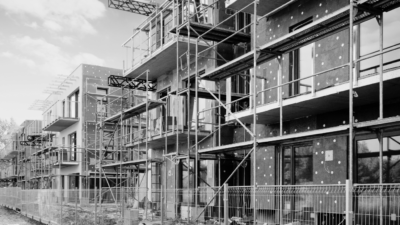Covid-19 has severely impacted much of the UK economy and, on a much more fundamental level, the way in which we live too. Experiences we once took for granted – hugs with grandparents, foreign holidays and seeing more than five friends, if you have them – have fallen away due to the destruction wrought by the pandemic.
Yet, one feature of daily life which hasn’t been pushed aside by the pandemic is the housing crisis. If anything, Covid-19 has cast a new light upon this perennial issue, showing us that it isn’t just the issues of quality and affordability that we need to tackle. The ways in which housing allows us to work remotely, connect with others and stay healthy are now also part of the debate.
As lockdowns have taught us all, having dedicated spaces to work and safe environments to interact with our community are vital for a good life. These realisations will cement themselves as demands in a post-pandemic world – and the housing market – will have to respond and adapt.
Co-living, however, is ahead of the curve. Enjoying huge success across continental Europe, and beginning to emerge here in the UK, these developments offer amenity-rich, community-based living in city centres.
They offer young people a slice of city living that they wouldn’t be able to afford through traditional housing products. Kitchens, gyms, lounges and cinema rooms are all provided affordably because they’re shared by the building-wide community.
This type of living isn’t for everyone, of course. But younger people moving to new cities are looking for communities they can be part of as they make a home. This desire is likely to surge post-Covid, as many newly graduates will want to meet people, socialise and start the next chapter of their lives.
Beyond the social, lies the economic. And co-living offers a raft of benefits that councils up and down the UK will be looking to explore once the pandemic passes.
Physical retail has been decimated by the pandemic, with e-commerce reigning supreme. While it was already in a dire way before the virus hit, bringing footfall back to urban centres will be a crucial part of our economic recovery.
Co-living offers the dynamism to blend uses together – housing, with retail, leisure, hospitality – and due to the efficient design and delivery, developments stack-up in central locations.
This brings communities back to high streets and urban centres, providing an organic boost for local retail and hospitality.
These developments also complement the low mobility future that we currently face, where home-working and travel restrictions will keep us closer to what’s local to us.
Co-living’s central urban offering plugs purpose-built homes into an already-existing social and public transport infrastructure, reducing the need for cars and favouring more active forms of travel.
Our recently approved scheme in Kingston with Viewranks Estates provides 200 co-living suites within a pedestrianised town centre with a bounty of retail and hospitality options nearby.
This too improves air quality – a huge issue for cities and human health. In the UK every year, 64,000 premature deaths are attributed to air pollution, according to Max Planck Institute.
Globally, it’s responsible for 8.8 million deaths a year, over a million more than smoking. This global health crisis can be ameliorated somewhat through more integrated, urban living where communities are given priority over cars.
Investor appetite for co-living schemes is also on the rise. Institutional capital sees a long-term role for co-living as part of a professionalised, amenity-rich housing mix, where purpose-built student living, build-to-rent developments and later living communities provide housing solutions for every step on life’s journey.
For institutional investors, there’s value in having the mix of income streams that co-living offers. These developments offer short-let income as well as longer-term rental income with the potential to generate additional income streams through services, lifestyle add-ons and ground floor activation – all of which can create both healthy yields and vibrant communities that stay longer and spend more in these locations. For towns and cities looking to attract institutional capital, co-living could be the ticket.
Planning, however, needs to catch up with the social, economic and demographic shifts already underway.
Some councils have seen the value of co-living, as our work with Kingston council shows, but the debate around co-living is far from over. And the pandemic has shown us all that we, as an industry, need to think bigger than affordability.
Housing could be a vital tool for driving economic recovery and re-centring human and planetary health in a post-pandemic world.
Co-living can undoubtedly play a part too if councils, and the wider planning system, opens its eyes to its opportunities.
Author: Tim Chapman-Cavanagh, director at Assael Architecture





















Comments